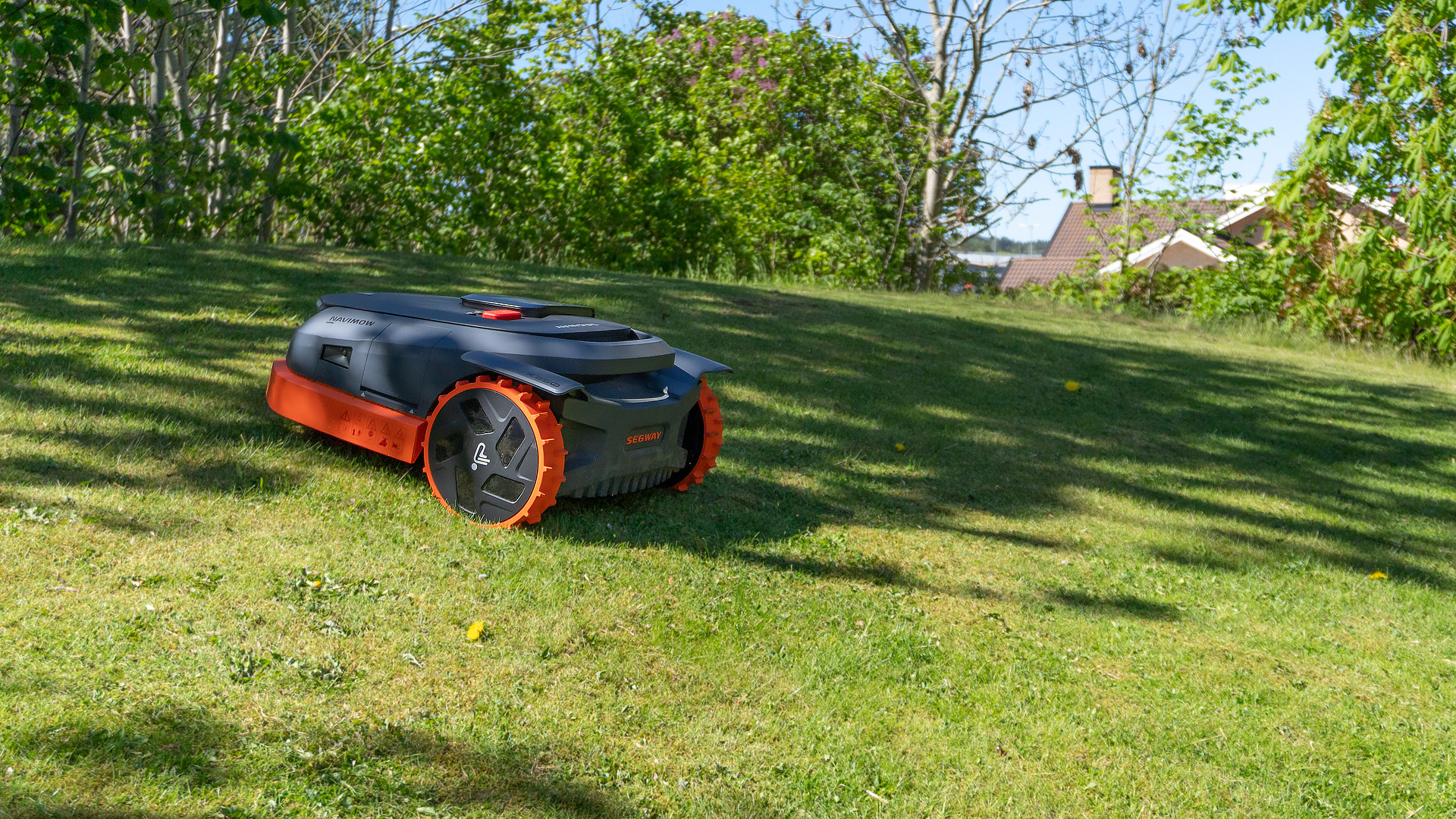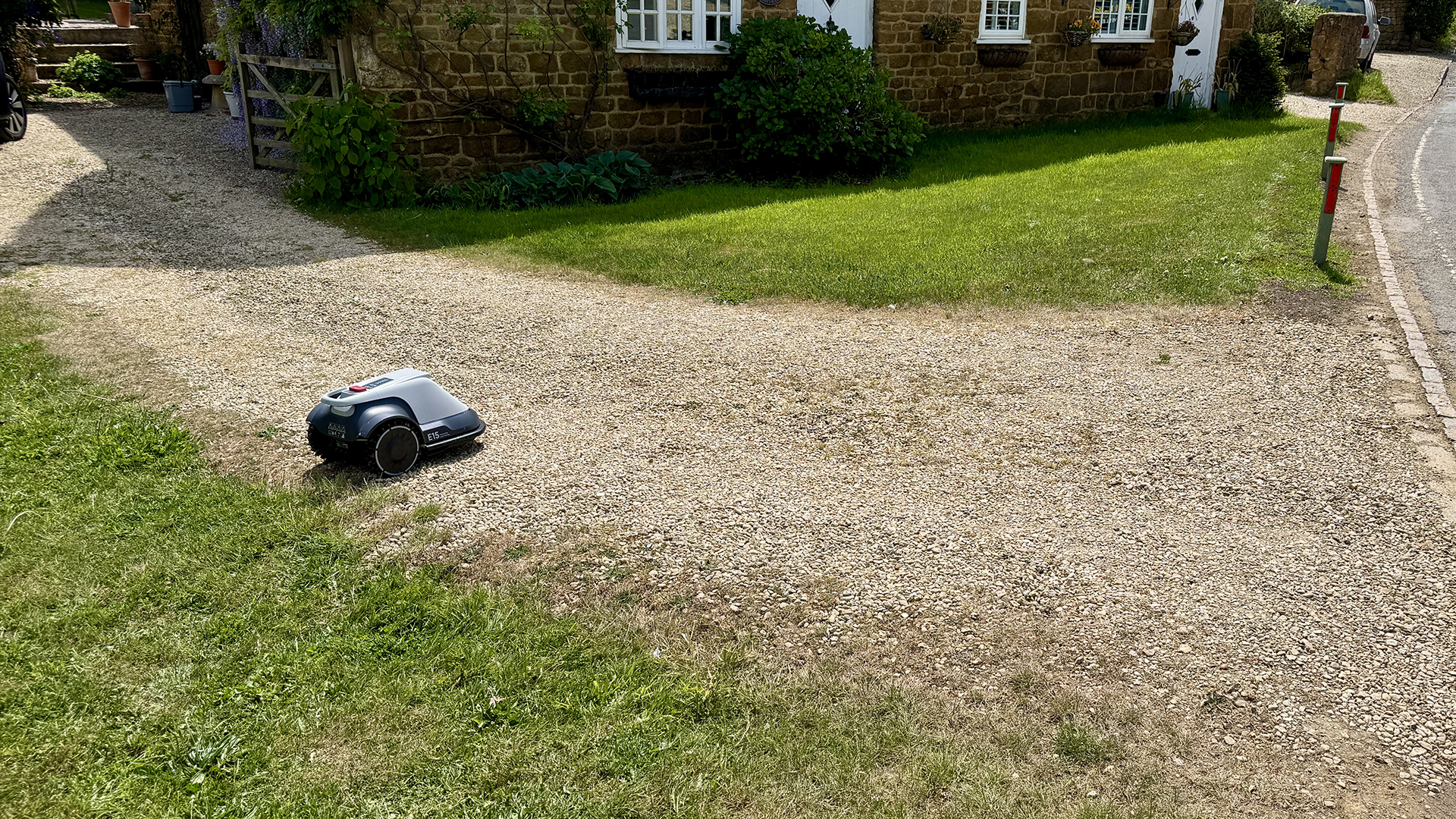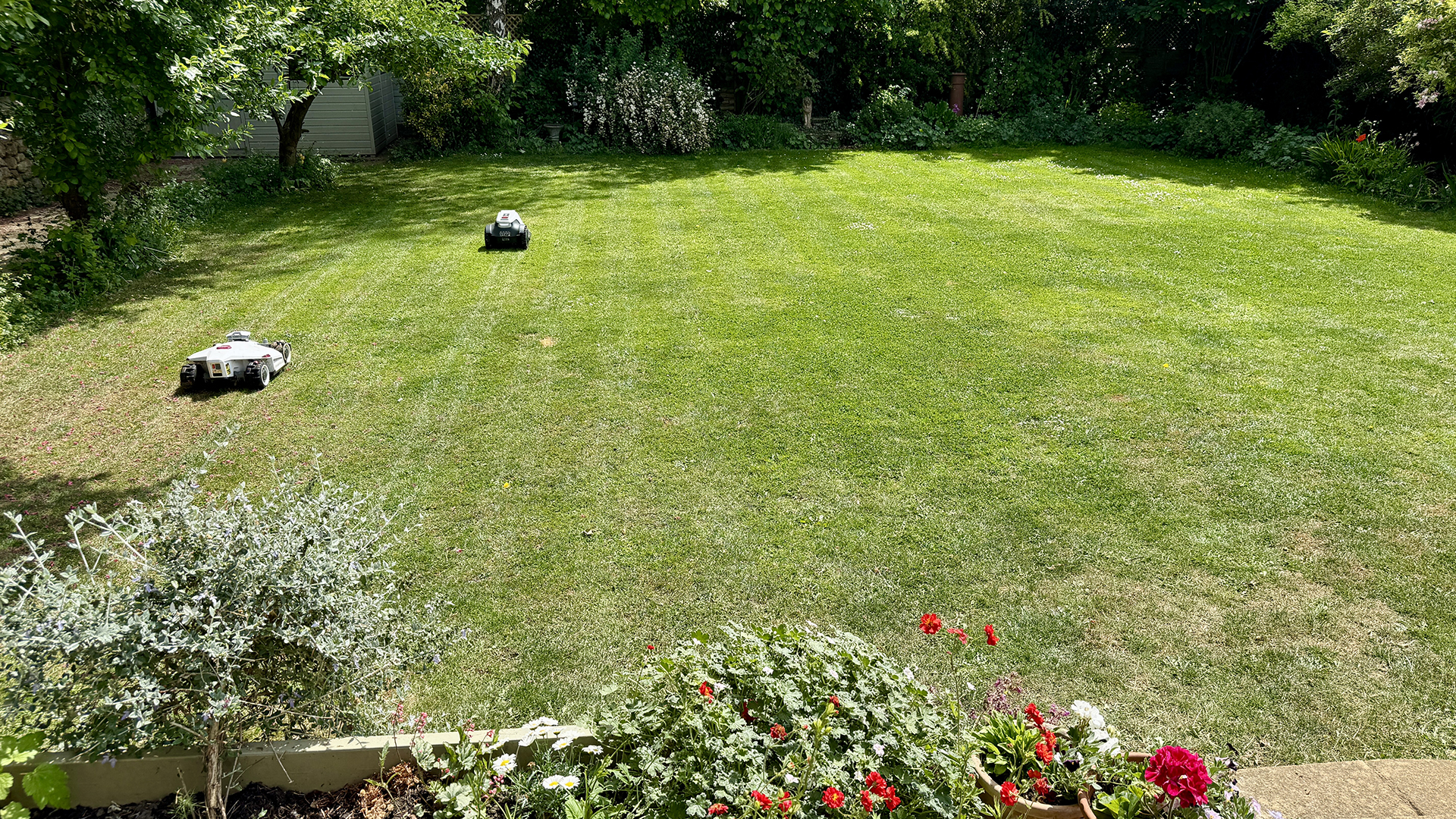Is my garden suitable for a robot lawn mower?
We look at the things lawnbots can – and can't – cope with

This article is part of TechRadar's Smart Home Week 2025. From lighting and switches to robot vacuums and smart thermostats, we're here to help you pick the right devices to make your life easier, and get the most out of them.
While the very latest range of wire-free robot lawn mowers are extremely sophisticated, they are still robots at heart and are therefore prone to occasional mishaps when used on lawns that aren't well suited to them.
So, with this in mind we've created this short guide to the problems that might face a robot mower if placed on an inappropriate lawn, along with a few suggested makes and models of robot lawn mower that we think are among the best options for lawns with challenging layouts.
1. I have a paddock or field
There are a few US-based videos on YouTube of owners complaining that their robot mower doesn't cut their field grass well, if at all. Frankly I'm not surprised. You have to remember that these lawnbots are designed for lawns, not fields or paddocks full of tall-standing meadow grass, weeds and nettles. This is because their diminutive 7-16in / 18-40cm cutting systems usually consist of a small, silent electric motor and one or two spinning discs equipped with three to five titchy razor blades that fling about underneath, snipping grass like a finely sharpened Samurai sword.
Conversely, a large push or ride-on mower is equipped with a much wider cutting deck (upwards of 19in / 48cm), a powerful electric or petrol-powered motor and a heavy-duty rotating steel blade that is usually capable of annihilating anything in its path. So, expecting a robot mower with small razor blades, a relatively weak motor and finite battery power to scythe through a field of tall meadow grass and weeds is a very big ask indeed.

Nevertheless, once the field has been cut a few times with a normal mower, a robot could feasibly continue the task on a regular basis – but only if it has enough battery capacity to complete the job without having to continually recharge itself. You may also need to acquire a robot mower with a higher maximum cutting height.
There are some more heavy-duty robot lawn mowers about – for example, the Mowrator comes with a larger steel rotary blade designed to be able to tackle tall, tough plants like brambles and nettles. However, it has to be steered like an RC car by the user at all times using the provided hand controller.
2. I have a steep lawn
The average robot mower with two-wheel drive is capable of scaling inclines of between 25% and 50%, though the majority can only tackle a maximum slope gradient of around 35%. However, this isn't especially steep (around 19 degrees) so if you have sharp inclines that even your push mower has trouble tackling, consider a four-wheel drive model like the Mammotion LUBA 2. This all-wheel drive beast with 16in / 40cm cutting deck, wide knobbly tyres and front suspension has no issues tacking slopes up to a phenomenal 80% (38 degrees).
Sign up for breaking news, reviews, opinion, top tech deals, and more.

For reference, here are the maximum slope gradients (in ascending order) for some of the most popular wire-free robot mowers currently on the market:
Model | Max cutting incline | Product link |
|---|---|---|
Husqvarna Automower 305E Nera | 30% | |
Segway Navimow iSeries | 30% | |
Worx Landroid Vision | 35% | |
Eufy E15 and E18 | 40% | |
Mammotion YUKA | 45% | |
EcoFlow Blade | 51% | |
Mammotion LUBA 2 and Luba Mini | 80% |
3. My lawn is very lumpy
An undulating lawn full of lumps and bumps is a challenge for any lawnmower. These types of landscapes may require some preparation before unleashing any mower, especially if there are lots of protruding stones scattered about. Your best bet for a smoother finish and no undercarriage damage on wildly uneven terrain is a model fitted with a floating cutting deck that adapts to the lumps and bumps by raising and lowering itself to prevent issues like grass scalping. If the lawnbot also has full suspension, all the better for it.
Take a look at some of the following models which all have floating cutting decks:
- Worx Landroid Vision
- Kress KR133E
- Robomow RT700
- Sunseeker Elite X3
- Husqvarna Automower
- Mammotion YUKA series
- Mammotion LUBA series
4. My lawn is broken up by a gravel path
If your lawn is divided by a gravel or paved pathway, fear not. You have two options available. If you are manually mapping (i.e. steering the bot around the perimeter of the lawn) and the pathway is flush with the lawn and of average width (between 20-28in / 50-70cm), you could map the entire lawn including the pathway and the robot will cut the edges of the pathway as well as venture up and down the path's centre section without actually cutting anything. As long as the path is flat with no protruding obstacles, the blades will come to no harm since they will essentially just be cutting thin air.

Alternatively, you could map both sections of lawn separately so you end up with two different zones. If the path is flush with the grass and there are no raised borders running along its length, you're advised to include the edge of the path in your mapping run, so make sure the robot straddles the section where the path and grass meet for a tidy edge cut. Now go into the app and select the virtual passageway option and choose a spot to drive the robot from one lawn zone to the other. It will then follow this path during its weekly routine.
If your robot mower maps automatically (Eufy E15 and E18, for instance), it will likely create two different zones but only if its camera has accurately detected a big enough difference in texture between the grass and the path. However, as mentioned above, it's no problem at all if it decides to treat both lawn sections as one.
An issue can arise if the gravel is especially deep – because the bot might dig itself into a trench and not be able to make it through unassisted. Assuming your lawnbot has the capability to map more than one area (most do), it will still be possible to map both lawn areas, but you might need to carry the lawnbot from lawn to lawn, which means you'll need to be present when you want to mow.
5. I have two or more separate lawns
Some robot mowers can be set to cut up to 10 different lawns and these zones, as they are known, are connected by virtual pathways that link them altogether. So, for instance, if you have a back lawn and a front lawn and there is an unrestricted passage between them, you can program your robot to cut the first lawn before heading along the passage to the second, and then back to its charging dock.
You'll need to make sure that all passages are clutter-free, and wide enough to accommodate the robot as it trundles from zone to zone. It's also possible for the lawnbot the navigate steps, if you add a ramp. If you have areas that you can't make a passageway between, it's still possible to map these areas, but you'll have to carry the lawnbot over to the inaccessible area you need it mowing. That means you won't be able to set up a mowing schedule for these areas.

Most lawnbots from Mammotion, Eufy, Segway and Dreame can be set to cut two or more separate lawns many metres apart. Take the Mammotion LUBA 2, for instance, which is a model I've experimented with. This marvel of technology can mow up to 10 different 'zones' and have them all linked together by virtual passageways. You simply manually steer the robot from one lawn to the next and add a series of pathways in the app. Voila, all your lawns will be cut on a regular basis while you chill out on the sun lounger, living the life.
Derek Adams has been in consumer tech journalism since joining London listings magazine Time Out in the early ‘80s. He’s an experienced reviewer of cordless vacs and robot vacs, indeed anything that runs on batteries or has a plug attached. Derek also writes extensively for TechRadar’s sister site T3.com between playing drums and guitar with his bandmates in Red Box.
You must confirm your public display name before commenting
Please logout and then login again, you will then be prompted to enter your display name.
